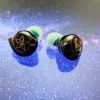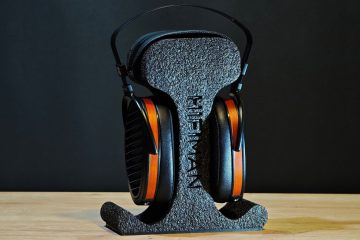Introduction
I’m here with a review of the Truthear Hexa, which caught a lot of hype for a while. After the hype was over and things quieted down, I wanted to review this iem. Let’s see how good the Truthear Hexa is.
I purchased the product myself in order to write an independent review. I spent about 80 hours of listening for the review (before that, I burned in for about the same amount of time).

Build & Design
Hexa comes with a compact box and has a good content for the price. It comes with a leather carrying case which I guess is faux leather. Wide and narrow tips come out of the box.
It has a thin and standardized cable and the shells look very simple, stylish and elegant. The drivers and ways visible through the dark gray resin add a very cool vibe. The nice looking shells have average performance in terms of fit and isolation.

Synergy
Hexa has a synergy with her character that is the opposite of many iems. It’s actually clever, let me explain. Truthear hexa is tuned in such a way that it matches perfectly with the neutral/bright toned sources that almost everyone has. Unlike a lot of iems on the market, it’s a terrible match for warm sources.

Truthear Hexa With Hiby FC6
The Hiby FC6, which has worked great with many of the iems I’ve listened to so far, is a bad match this time. Coincidentally, FC6 was the first source I plugged Hexa into. The first thing I said was wth. These two together sound very thick, extremely warm and terribly dark. Both are good products but they should not be used together. Here is the importance of synergy.

Truthear Hexa With iBasso DX180
That’s what I call a match. iBasso DX180 brought out the beast in Hexa. In this pairing, the Hexa shows its full potential. Resolution, separation, imaging are all very good. Tonally, it is very balanced and appealing to the general audience. Maybe the lower frequencies could be a bit more punchy, but it’s still good.
Sound
Set your expectations for an $80 iem and you will be quite satisfied. Considering that Hexa has caused a lot of hype, it lives up to expectations.

Tonality
neutral-warm
The Hexa has a cleverly calibrated tonality. The lower frequencies have good hum and volume. The midbass is slightly forward but this does not prevent the sub from rumbling. The mids have a good inner balance and are natural enough. The guitars have a lot of body. Overall the instruments are calm and smooth. There’s no excitement but no chaos either, which I think is fair. The vocals have some space and they have the same softness as the instruments. The treble is generally warm. The lower treble is a bit recessive. This separates the Hexa from 80% of the iems in the chi-fi market. I find this makes sense because it makes it sound in harmony with the most common sources. When we get to the cymbal zone (~8khz) it finally rises a bit, which is quite necessary. It would have been better if the air frequencies were a bit stronger in the upper treble, but Hexa shows its warmth here too.
Technique
What can be said. It’s been 2 years since Truthear Hexa came out and the technique is still competitive today. It has high resolution for the price and great detail reproduction. It has an intimate but deep enough soundstage, decent separation and unexpectedly nice layering for the price. It’s a beast of a competitor, with good imaging, consistent timbre and an overall above-average texture. I was thinking of writing a comparison post for this review, titled Hexa vs Quartet. I decided against it because Hexa is clearly better.

Last Words
I honestly think this iem is a pr project considering the tons of praise it has received and the hype it has generated. It’s probably still almost unbeatable for up to $100. Truthear probably took a financial loss on Hexa, but they did a great job promoting the brand. From a user perspective, it’s clearly a sensible product.











